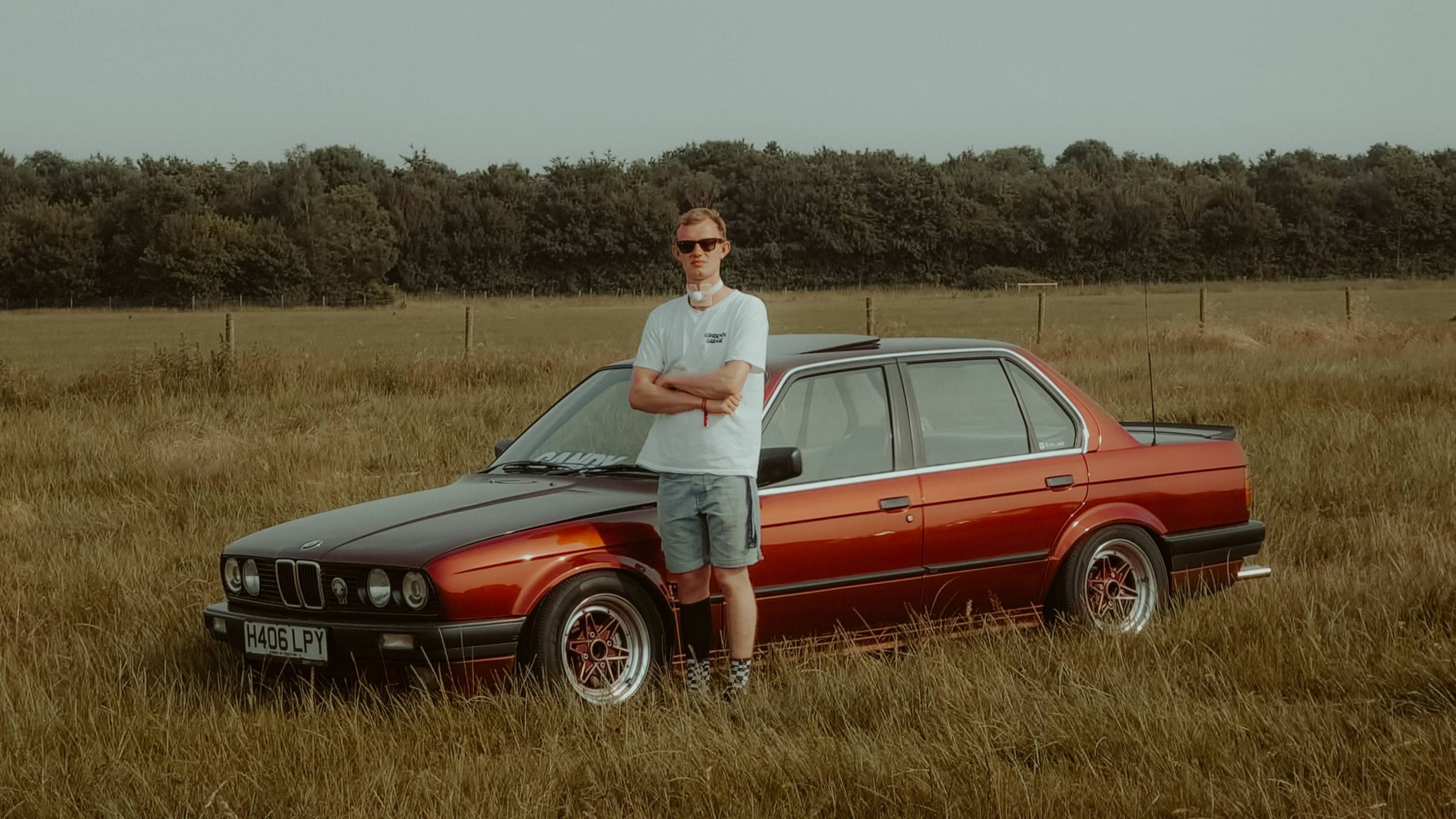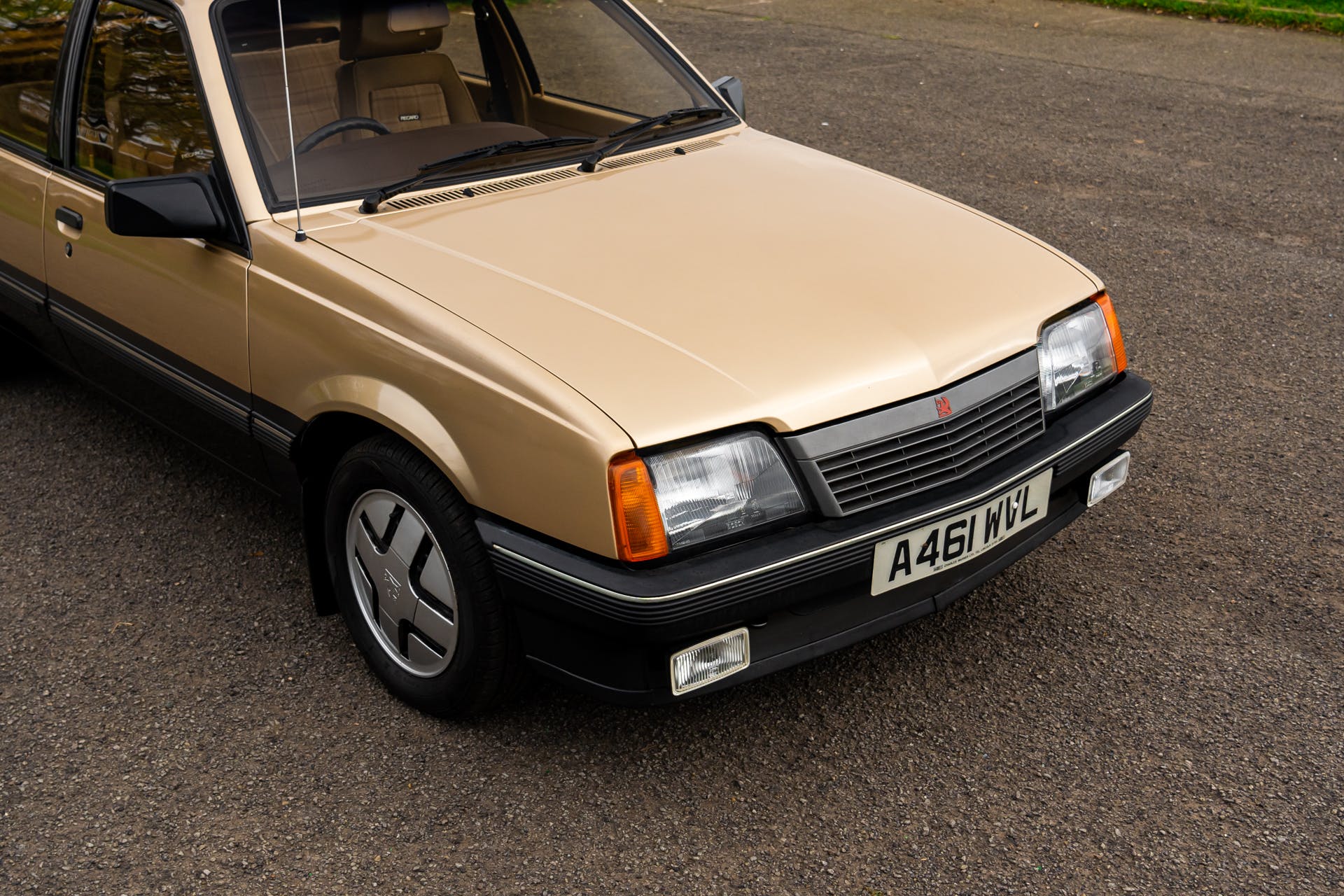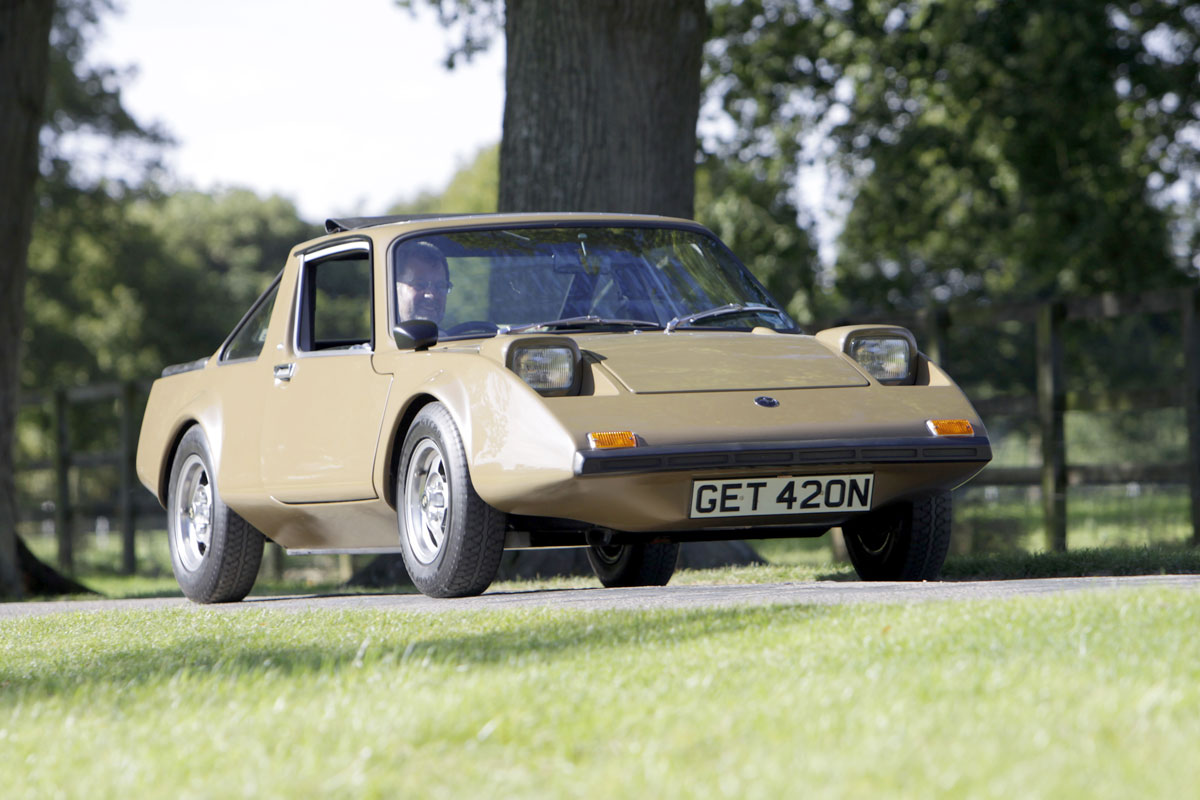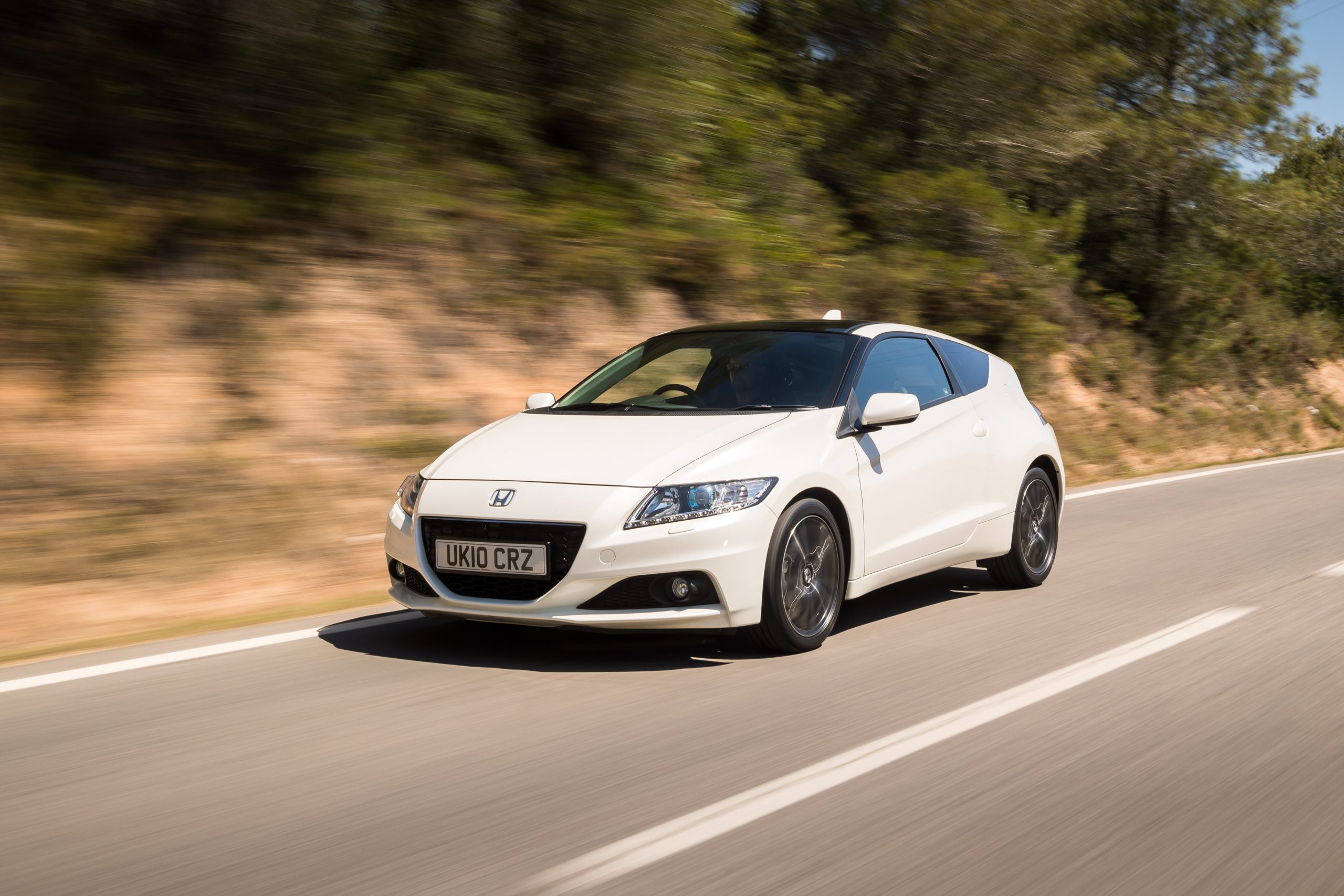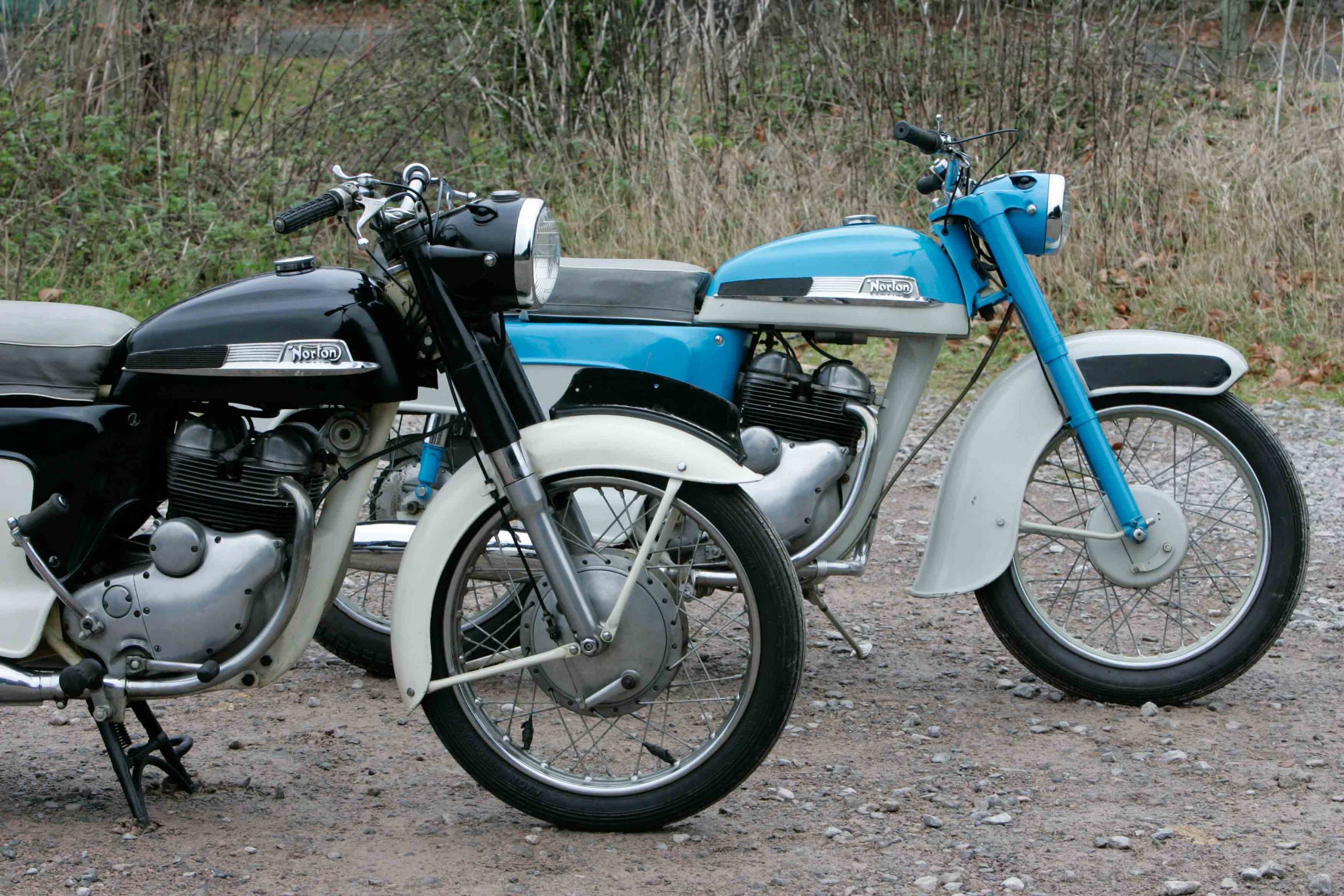Gazing out of his workshop window, reverse glass artist David A. Smith is in a reflective mood. Glittering and crystal clear, there’s a calm sea within his view. “It’s got a nice feel to the place,” he says, with a relaxed West Country accent that only visits for certain vowels. “I work on my own and take on what I can, but the harder you work the luckier you are and it’s work, work, work that’s got me to where I am today.”
Dave, who prefers the more informal rendition of his name, is an MBE with celebrity clients and a worldwide following. “King Charles knew all about what I do, I couldn’t believe it,” he says, recalling the day he travelled from his Torquay studio to Windsor Castle to collect his medal for services to the arts. “It was a very special moment, they didn’t break out the champagne though.”
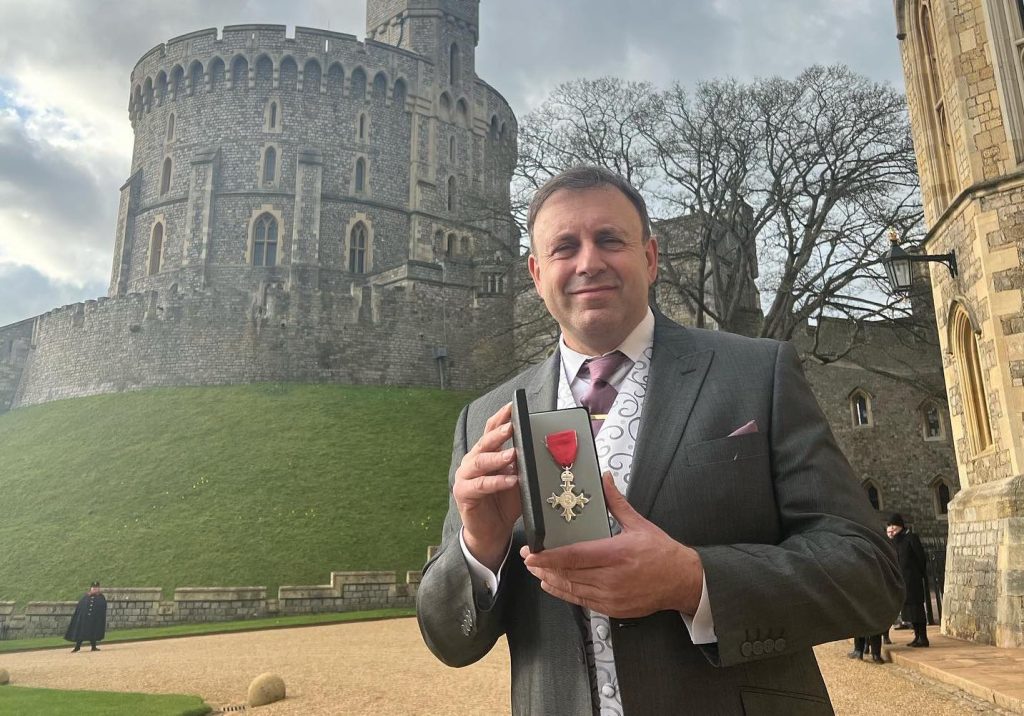
Reluctant to be put on a pedestal, “I can get quite anxious when the attention is on me,” Dave is a modest hero of the unsung heroes who rekindle heritage crafts. Describing what he does as the “old-fashioned art you see on pub mirrors and shop fronts,” his ornate handmade pieces, which have included commissions for Tom Hanks, Bernie Marsden and David Beckham, are inspired by an obsession with Victorian design and elegant typography that began when he was ten. “I saw silvered letters in an amusement arcade window and thought, cool, what’s that? I walked past them on my way to school every day, and even though I didn’t always stop to look at them, they always caught my attention.”
At sixteen, Dave seized the opportunity to explore that childhood curiosity when he began an apprenticeship to learn signwriting and glass embossing with artisans in Paignton. His tutelage, which began in 1984 and lasted five years, included sweeping the floors, making the tea and cleaning the toilets. “It was part of the process of learning to have respect for elders”, he laughs. “Those old guys taught me skills that set me up for life.” Dave, a nostalgic sort, treasures a tin that contains a selection of veteran brushes and quills. Left to him in a will, they belonged to one of his aforementioned mentors. “Geoff made this kit when he was an apprentice before he went into the army, he was involved in the D-Day landings, but he came home and went on to paint London buses. It’s a lovely thing to have.”
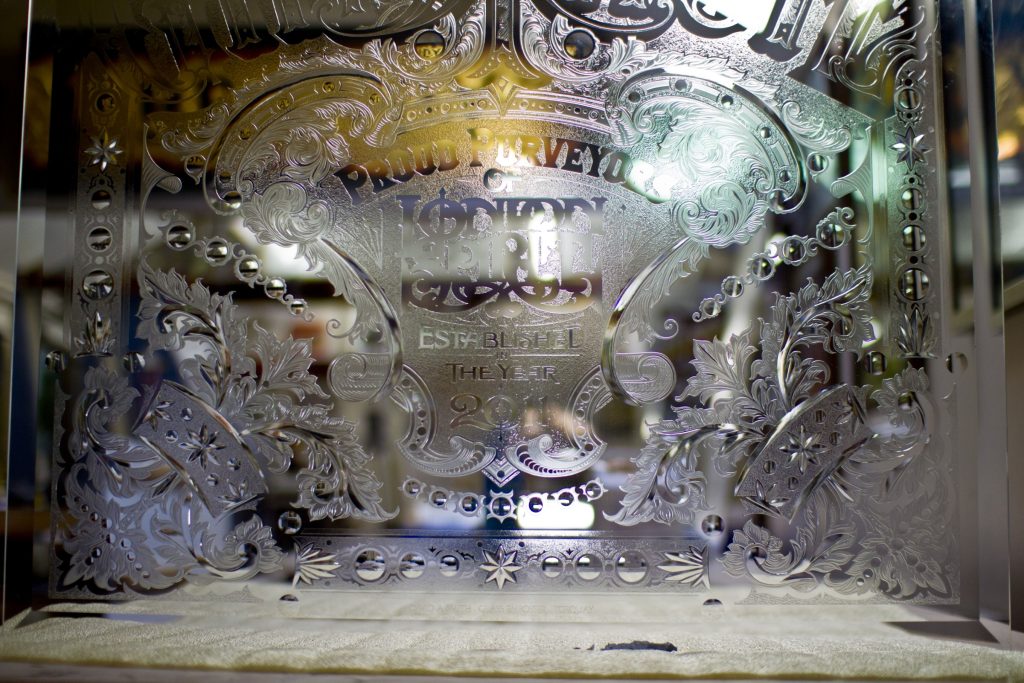
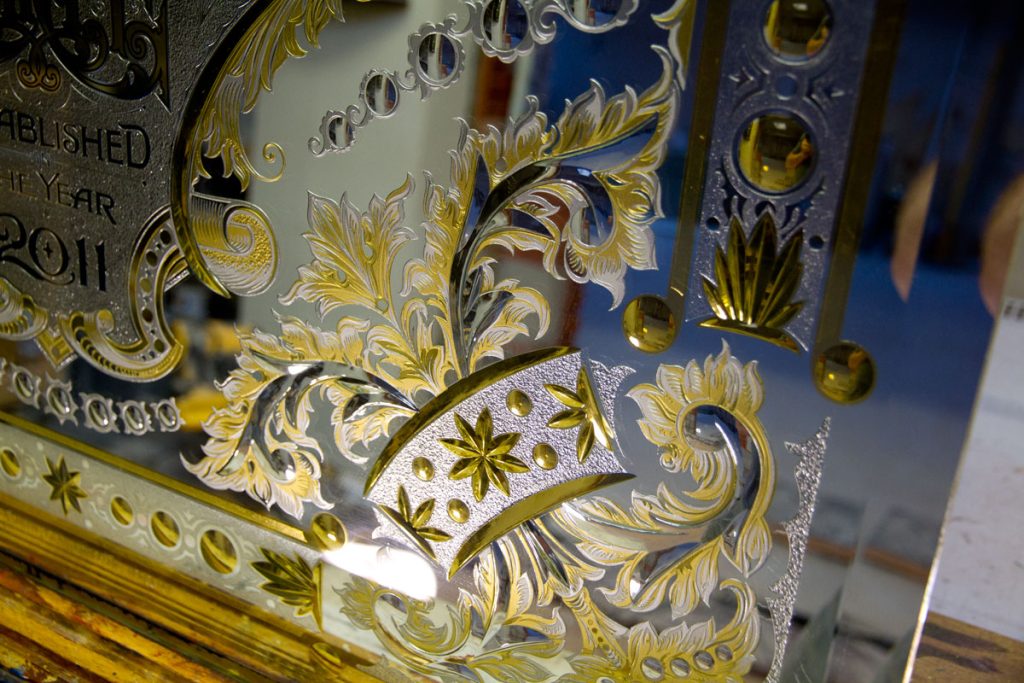
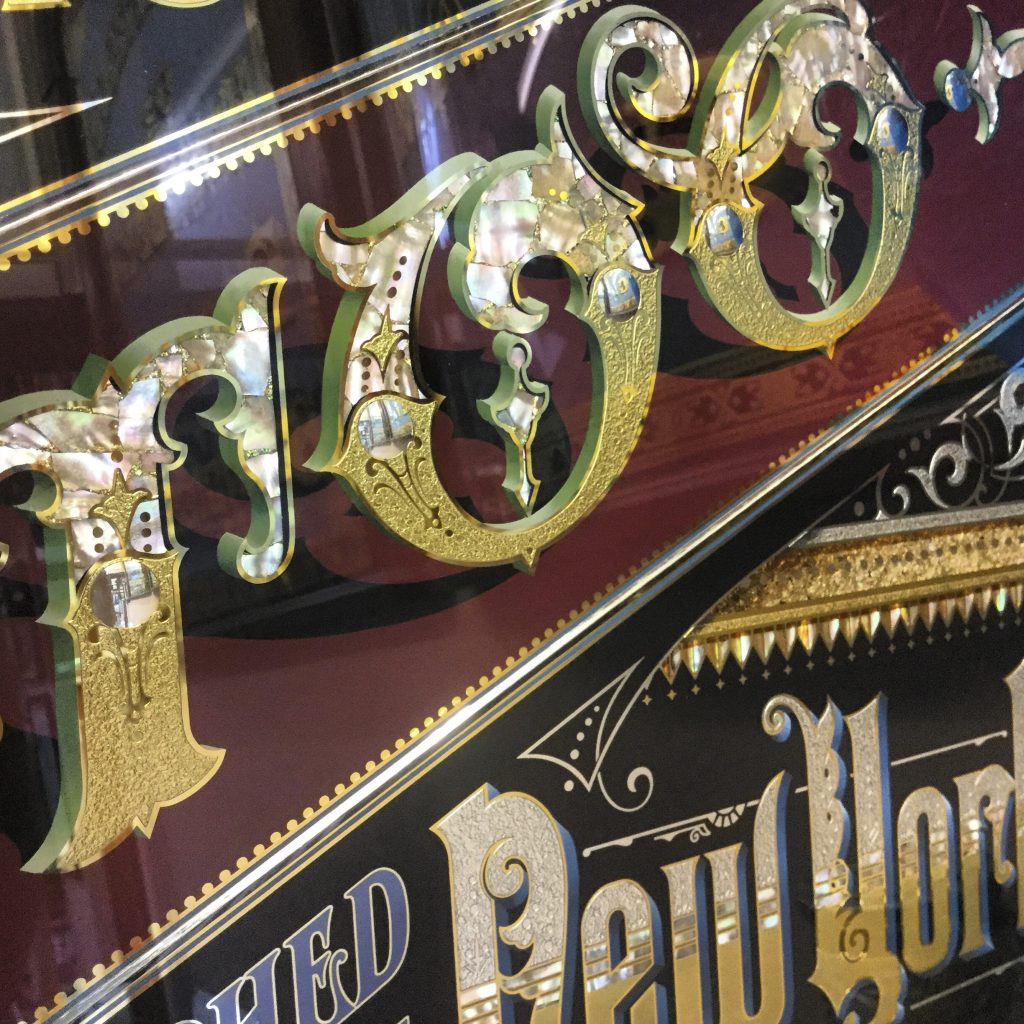
Other timeworn acquisitions, discovered in antique emporiums and flea markets, adorn the workshop walls. Colourful and heavily-embellished panels that carry the advertising slogans and merchant titles which were typical of a mid-19th century high street are hung alongside those which Dave has made himself. Rich, lustrous and eye-catching in style, it’s impossible to set the old and the new apart. Study them forensically though, and the material differences would manifest; the harmful lead-based paints once favoured by sign painters have been replaced by oil-based enamels.
For several years following his training, Dave earned a decent living in the trade, “sticky vinyl letters were becoming the norm and that made it easier for signwriting companies to be more profitable,” but with the twinkle of the silver letters he’d seen as a boy still very much in his eye, Dave felt he had a calling; to save traditional reverse glass art techniques from being rendered redundant. “Back in the day even the most industrial towns and cities were made beautiful by bespoke facias whereas now it’s all become so cold and mundane.”
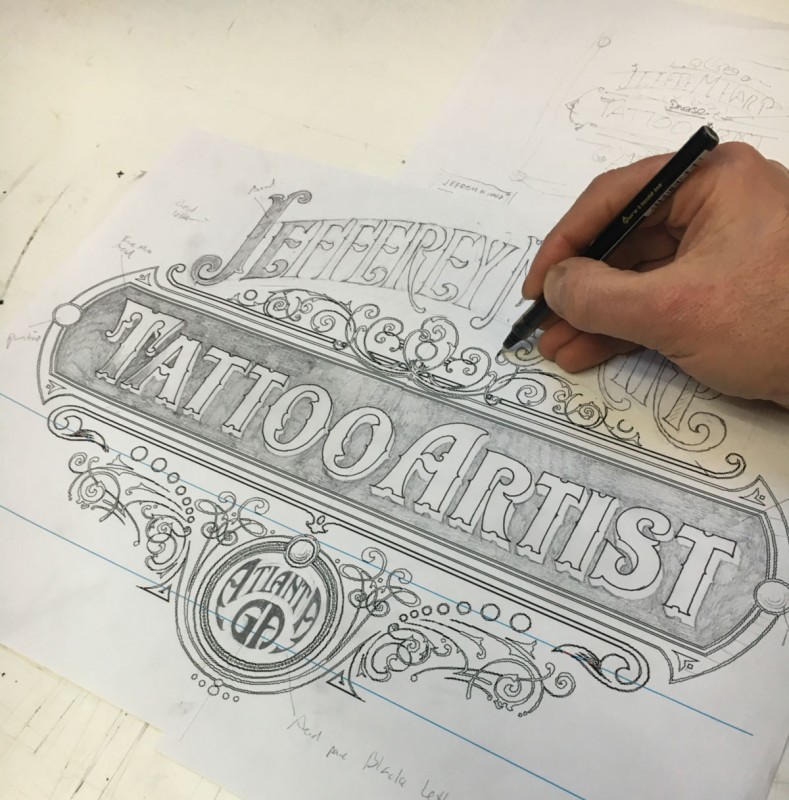
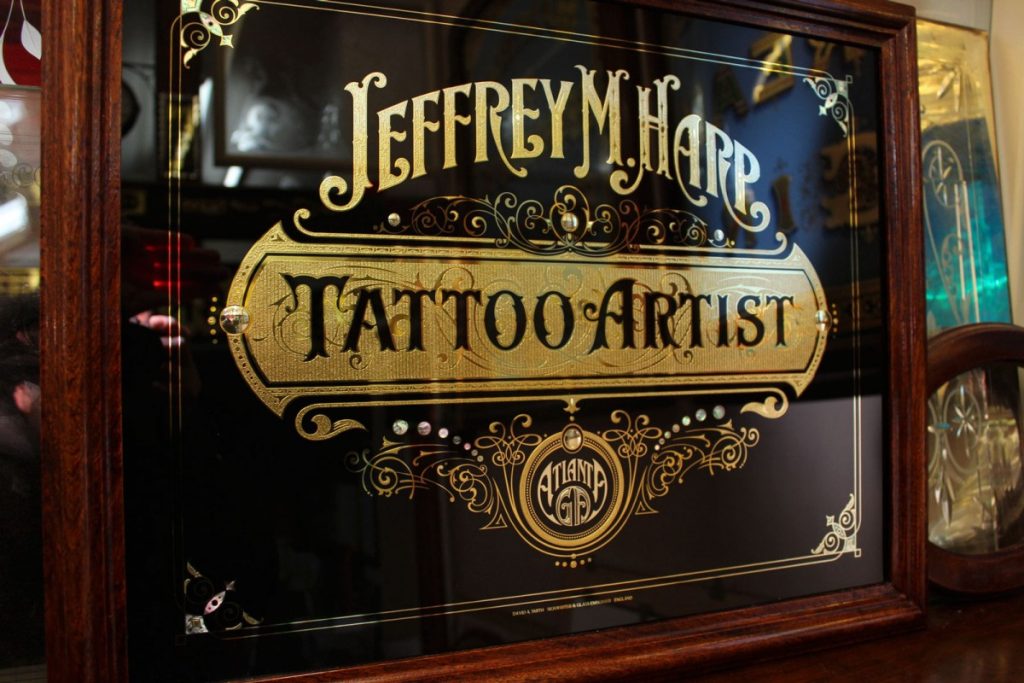
The freedom of self-employment led to serendipitous turning points which took place across the Atlantic Ocean in California. The first, an intimate encounter with a gilded popcorn stand at Disney. “I’m not kidding, I was like a trainspotter of the glass world,” Dave chuckles. “I asked the guy making the popcorn if I could feel the back of the glass, he let me, and the texture just blew me away. I thought I have to learn how to do this.” The second, was meeting America’s “godfather of gilding” Rick Glawson. “He ran this amazing place where you could learn turn of the century techniques. I met so many people there that were willing to share this craft, it felt like it was meant to be.”
Back in the UK, Dave’s decorative glass designs, resplendent with bold swirling letters and of the era style illustrations, put him in a niche field. To heighten his profile, he paid £500 a year to advertise in the Yellow Pages, and to showcase his talent he painstakingly transformed a 1968 Morris Minor 1000 Traveller. Restoring it to more than its former glory, the burgundy sixties vehicle was an extravaganza of Victoriana. Featuring a plentitude of traditional techniques, including mother-of-pearl glazing, acid etching (a chemical process that gives glass a frosted look) and gold leaf gilding, “the most noble of all metals,” each of the side and rear windows wore their own unique motif. The dazzling mobile billboard, a labour of love, worked its magic. “Driving it around my hometown drew a lot of attention, and business,” but Dave’s reach, boosted by social media, has not been contained to Torquay.
Admirers from across the globe have employed him to devise and bring into being a one-off piece. The most ambitious, a “big, massive, huge,” mirrored sign for the vintage barber shop Ludlow & Blunt in Brooklyn, New York. It took 4000 hours to accomplish and was dropped in transit at JFK airport. Is there truth in the superstition that when a mirror shatters it brings you seven years of bad luck? Miraculously, Dave didn’t have to find out. “I use low iron glass and this piece was 12mm thick with a 50mm bevel edge which helped it stay intact. Touch wood, I’ve not broken any myself, I’m pretty careful.”
The journey of Dave’s Ludlow & Blunt masterpiece, from sketch to installation, was documented by filmmaker Danny Cooke, but Dave is most at ease when communicating the details of his craft. A precise plan, he says, is essential. “Every design starts with your imagination and a pencil. Russell Manley [the barbershop’s proprietor] and I agreed that it should capture the golden age of barbershop emporiums as well as celebrate all the traditional skills I’ve learnt over the years.” Did he not worry that such an all-in application of techniques would be over-the-top? “They’ve all got their own characteristics so when you bring them together they look spectacular. The design is everything.” Another top tip; clean the glass before you begin.
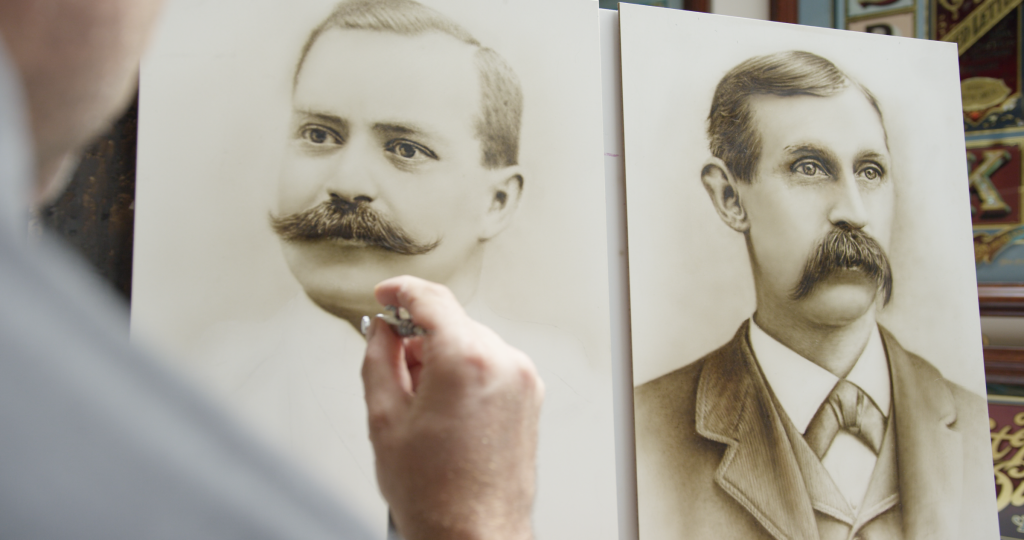
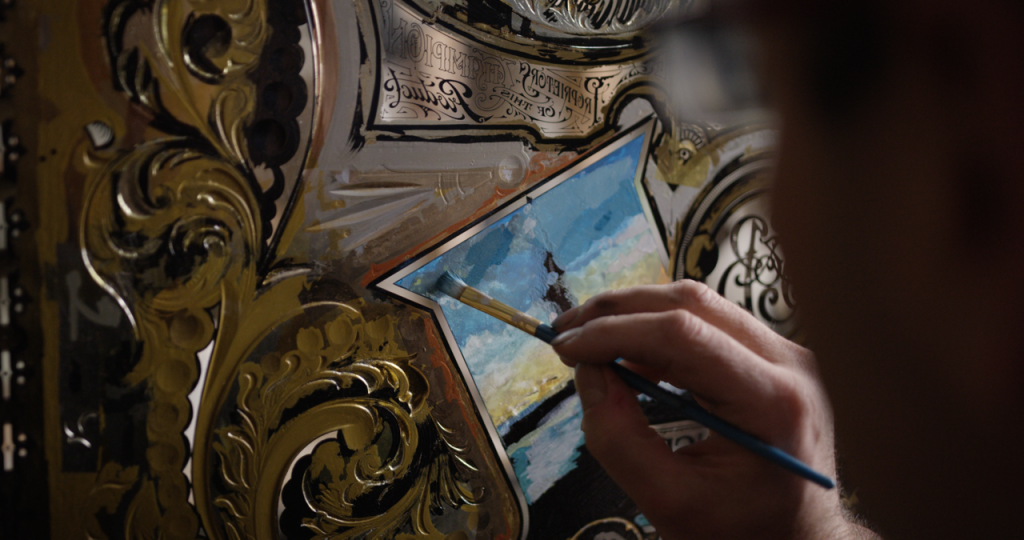
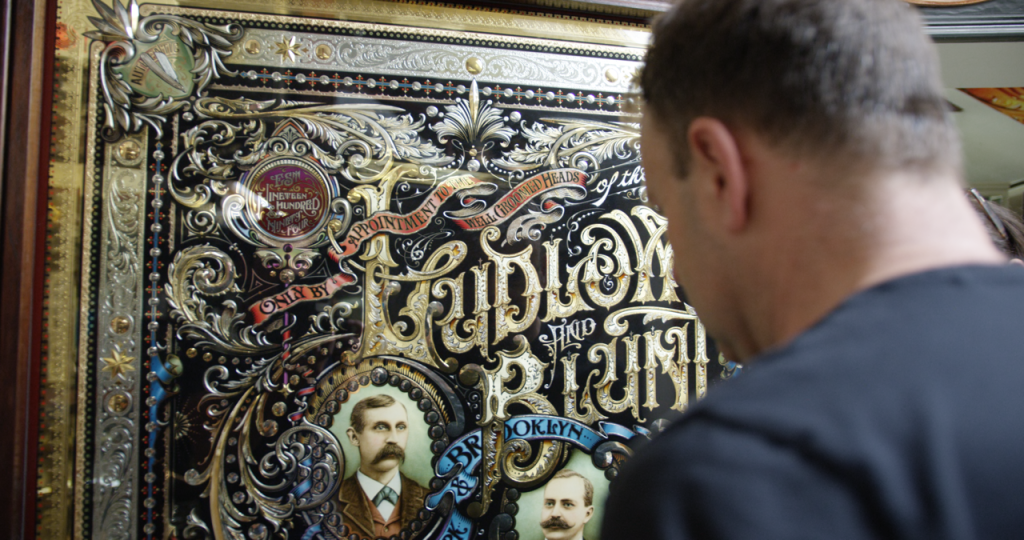
To transfer his composition from paper to the pane Dave used a combination of screen printing and hand painting in ink. Parts were then exposed to dilute hydrofluoric acid which corroded the glass to produce subtle changes in its tone; a practice known as French embossing. “Light plays an important role in bringing reverse glass pieces alive.” Stone wheels, in varying sizes, are used to cut delicate grooves into the glass which catch and refract light. “The pressures and angles involved need to be precise, one wrong move and you’d need to start over.”
Quartered in a handsome timber unit, Dave is beguiled by the precious leaves of gold and silver at his disposal. A faceted glass knob furnishes each drawer. The sheets are so thin, he heeds, that the lightest breeze can cause chaos, but it only takes the shortest breath or a soft-bristled brush to affix them to a surface which has been coated with a layer of sticky, gelatine-based glue.
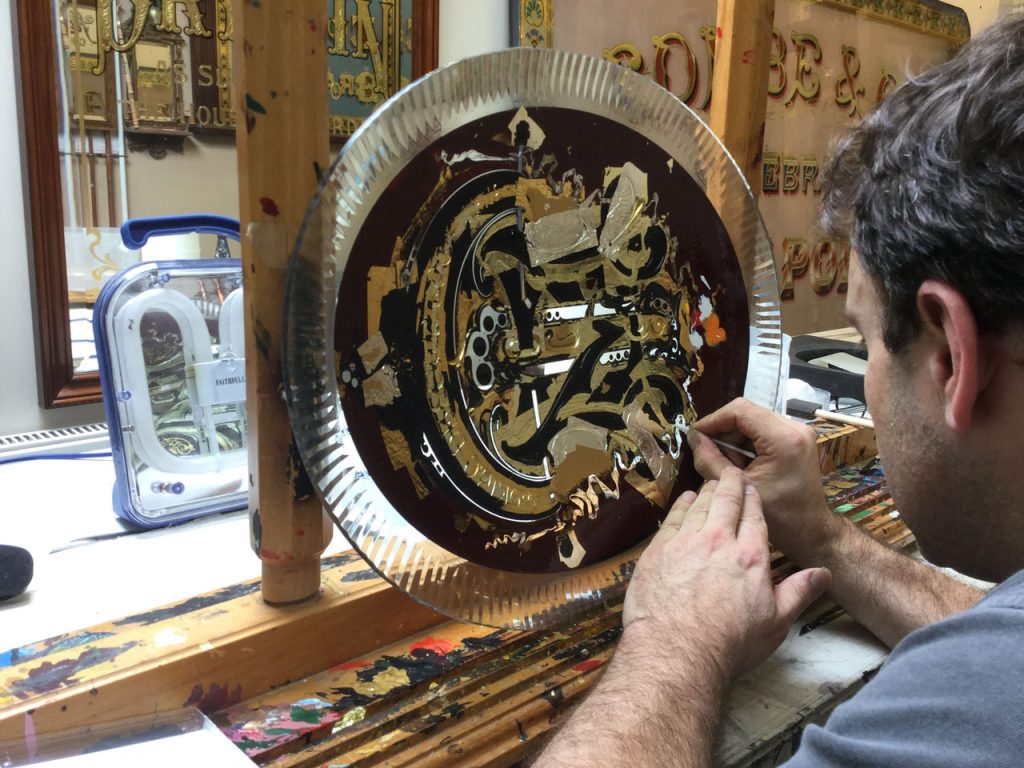
“I get lost in the moment, but what I do takes a lot of dedication. The Ludlow & Blunt piece was a massive job, I built up the layers gradually.” Glue chipping, which involves sandblasting the glass before pouring animal hide glue onto it, which lifts fragments from its surfaces as it dries, is one of Dave’s favourite techniques. “It’s such an organic, natural process that creates this kind of fancy and unique effect.” The result looks a little like the feathers you find in sheets of frozen ice, but to cultivate a perfect finish, the conditions need to be comfortably warm.
The majority of Dave’s tools, “you don’t need a lot,” have been employed by craftspeople for generations: the Mahl stick keeps his hand steady and the kiln slumps and bends glass. But, he says, there is a way that tradition and technology can work together. To add shading to the faces of those he depicts in portraits Dave uses an airbrush, and a computer-controlled cutter known as a plotter, “it’s like having someone work for you.”
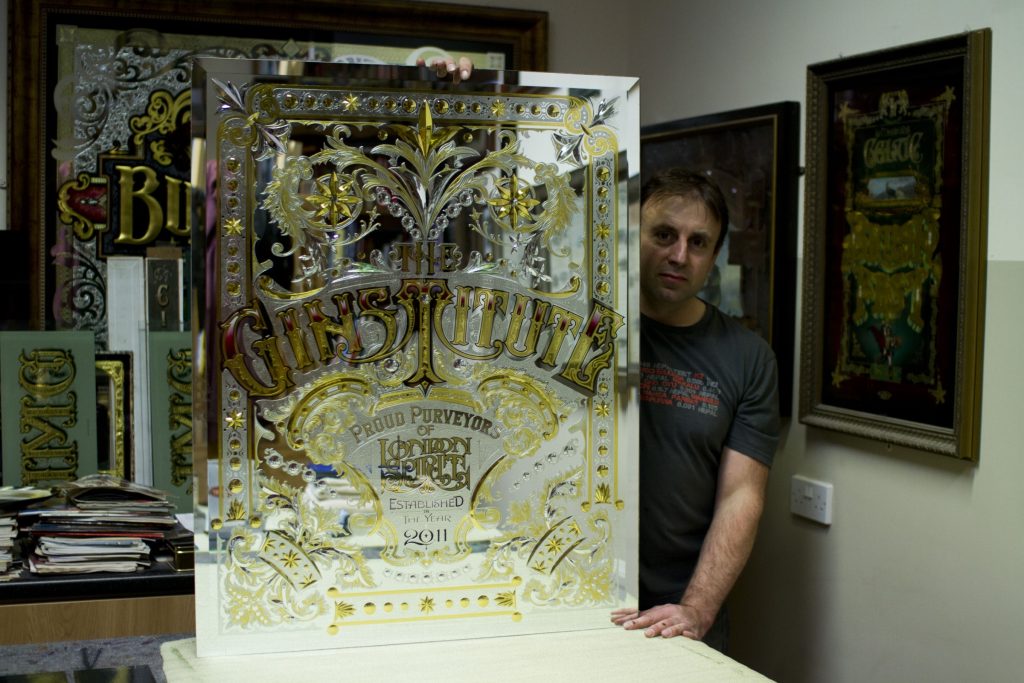
Still, Dave is keen to stress, no machine will ever be able to excel the hand and eye skills of an artisan. Shaping his letters freehand “it’s all about flow” his fonts are often of his own invention. There’s the “Mayer,” which came to being when the musician John Mayer asked him to design the cover for his album, Born and Raised; the “English Rose,” a tall, swirling typeface; the “Chapman”; the “Factory”; and the “Oliver,” which draws its influence from the stone carved lettering on one of Torquay’s oldest buildings. To garland the edges of letters, Dave has a penchant for using Fleur-de-lis and Acanthus leaf motifs.
Conversation is interrupted when a call flashes up on Dave’s phone; Dom Chinea, of the BBC’s Repair Shop, is on the other end of the line. “He was here a while ago to do one of my gold gilding courses.” It’s a matter of fact, not a brag. Since 1986 Dave has taught over 3500 aspiring reverse glass artists, “people from all walks of life want to keep the craft alive.” In-person two or four day courses take place at Dave’s workshop on the English Riviera, but be warned, there’s a waiting list. The alternative is to do it digitally. With help from his daughter, Lauren, Dave filmed 52-hours of step-by-step tutorials that can be downloaded for £795. “It feels like you’re with me in a class because nothing has been edited out. If, or when, I drop a brush on the floor, I use it as an opportunity to show people how to clean it properly.”
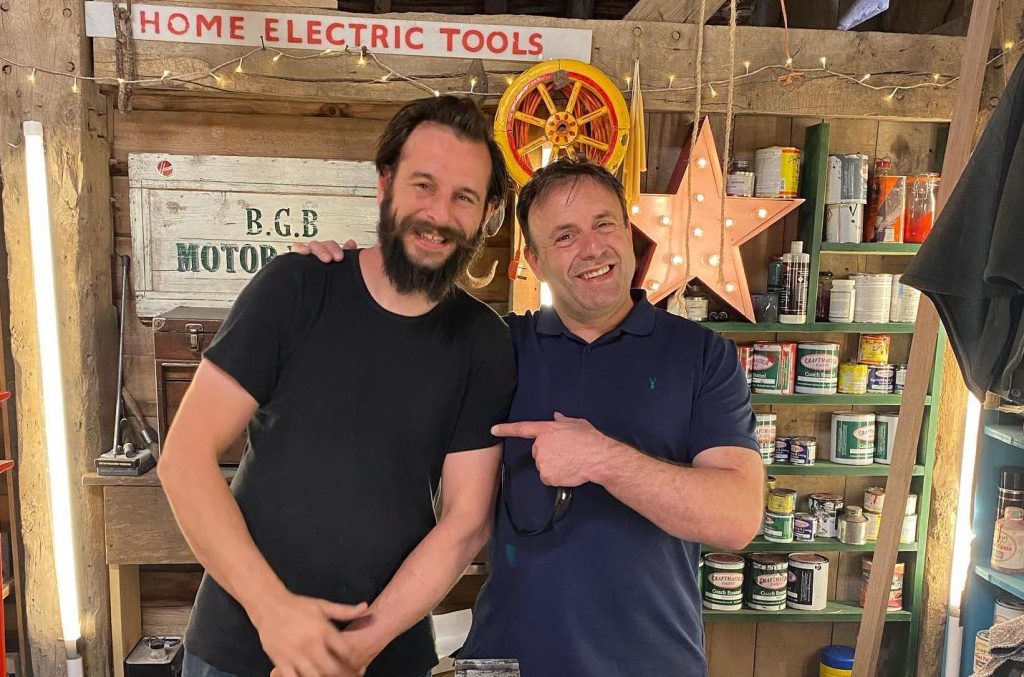
At a guesstimate, Dave supposes three quarters of his former students have applied their skills professionally; it’s a staggering, albeit unsubstantiated, indication that working in crafts can be a viable occupation. “Reverse glass art was a massive industry in the UK, bars, breweries, gin palaces and store fronts, it was everywhere,” says Dave. “A lot of it got destroyed during World War Two when our cities were bombed so to think someone in the next century might see and display my work, or someone I’ve tutored, is truly humbling.”
Online courses can be found here: https://davidadriansmith.com/an-introduction-to-gilding/, and you can also find Dave on YouTube and Instagram.
Check out the Hagerty Media homepage for daily news, features, interviews and buying guides, or better still, bookmark it.




